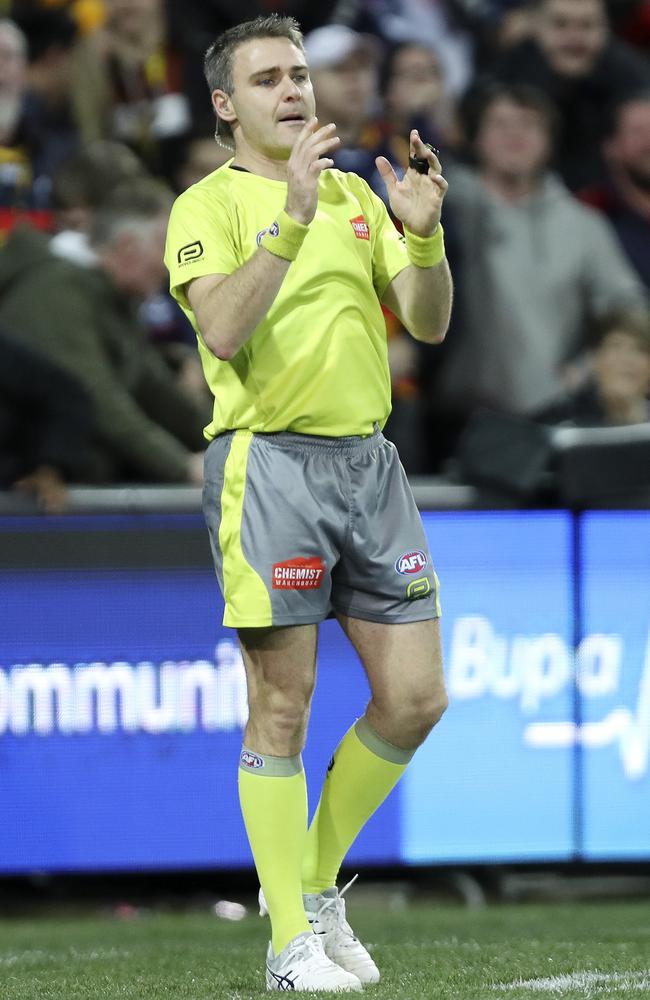AFL needs to commit more to score review rather than rely heavily on broadcaster’s vision
AFL score review was introduced to avoid major controversy on goal scoring calls. But with limited technology and a lack of transparency, there is more controversy than confidence.
- Jenkins has backtracked on goal comment: Roo
- Power challenges score review system
- Crow’s call for light-up goalposts
- Monumental mistake: Hinkley fumes
- I think it hit the post: Jenkins comes clean
NEIL Craig, the long-serving and measured Crows coach, always said it best when controversy overshadowed a football result.
The day his players were perfect, argued Craig, he would take on the umpires’ perceived errors.
Showdown 45 — another classic that delivered a margin of a goal or less for the fifth time in the past decade — has several debate points on 50-metre penalties, ruck infringements, advantage calls and the inevitable doubts on holding-the-ball and incorrect disposal.
And there was no shortage of player errors.
So, as Craig would say, the search for the perfect game — by players, umpires and coaches — remains elusive.

But the AFL cannot shrug its shoulders at score review, the system the league introduced in 2012 to have technology — along with taller goalposts — spare outrage with goal umpiring errors such as moment in the 2009 AFL grand final when Geelong forward Tom Hawkins’ kick rubbed a post but was registered a goal.
After seven seasons of repetitive controversy being created by a system that was designed to minimise contentious moments, the AFL has to either clear away the doubt — or clear away the system.
There are some pressing concerns the AFL needs to resolve, such as:
TRANSPARENCY, a theme the league once championed. Cricket eagerly tells of the officials in charge of a Test match — the two umpires on the field, the third umpire in the booth and the match referee.
Score review needs confidence restored with detailing just who is making the big calls. This certainly should be the case at Adelaide Oval where the task falls to two former AFL goal umpires with long records in judging scores in the national league and SANFL. If anyone can appreciate the task across the 18 metres of the goalfront, it is the two score reviewers at the Oval. If the AFL puts every other umpire’s name in the Record, including the emergency umpires, it should do the same with score reviewers.
TECHNOLOGY is the challenging point — more so when there are differing systems across the AFL. To use the quote from the AFL coaches in their Fox Footy promotion, “every game is important” — so every game should have score review working to the same level of technology.
The AFL’s reliance on the broadcasters — each with differing levels of production resources (such as cameras) at differing game — makes score review vary from game to game.
It is a weak point the AFL has brought upon itself — and to the reviewers’ tasks.
SHOTS at goal come from so many angles and, at times, do pass the goal line higher than the 12-metre tall goalposts. Today, there is not a camera — not even the behind-the-goal camera — that can deal with this kick (best illustrated by the Tony Liberatore kick in the 1997 preliminary final that still creates debate on whether it was a goal or, as scored, a behind).
Until the AFL sets up technology to every post at every venue — as tennis has done with every line on its courts and cricket with every Test match — score review will continue to leave doubt rather than clear it away.
